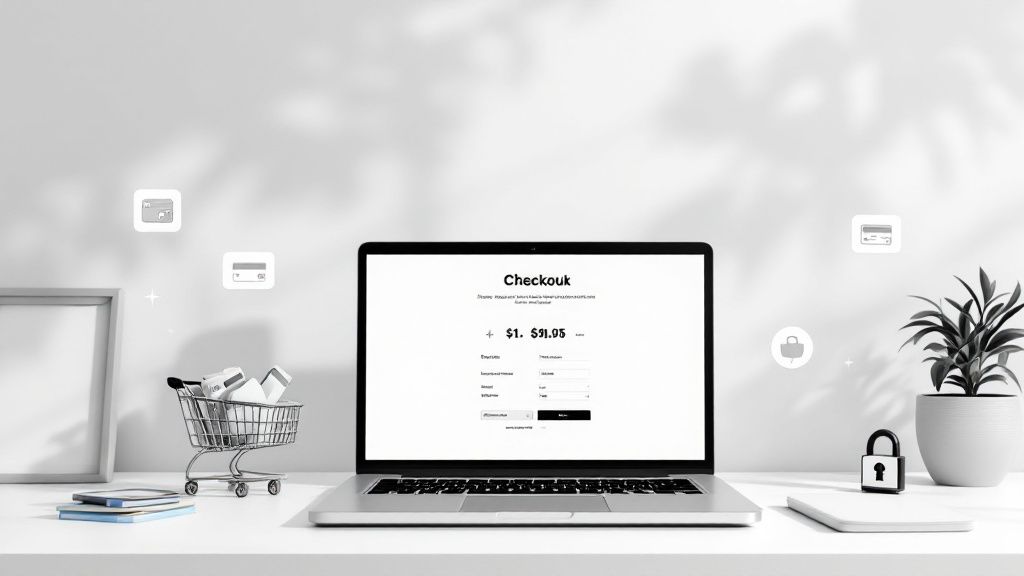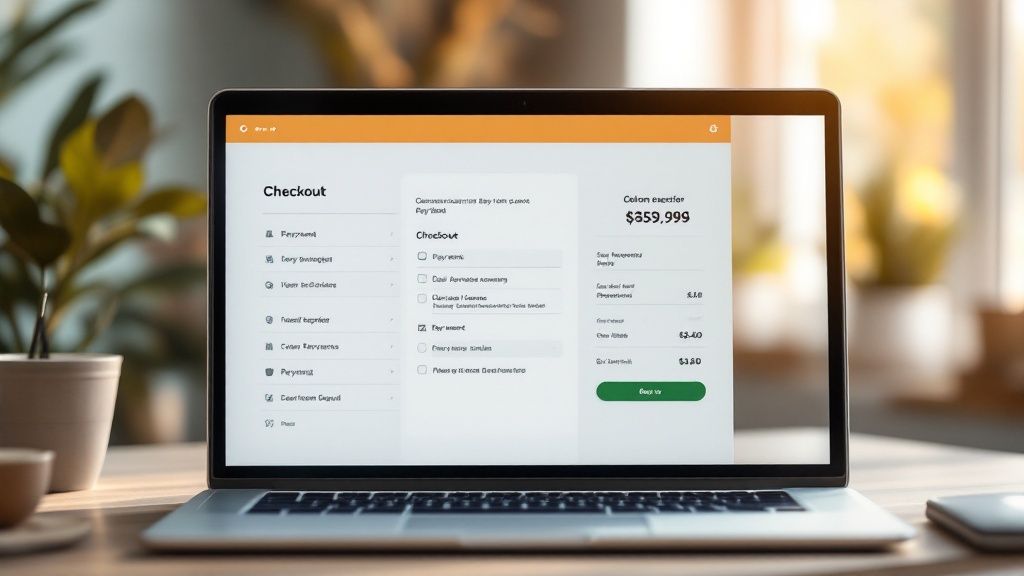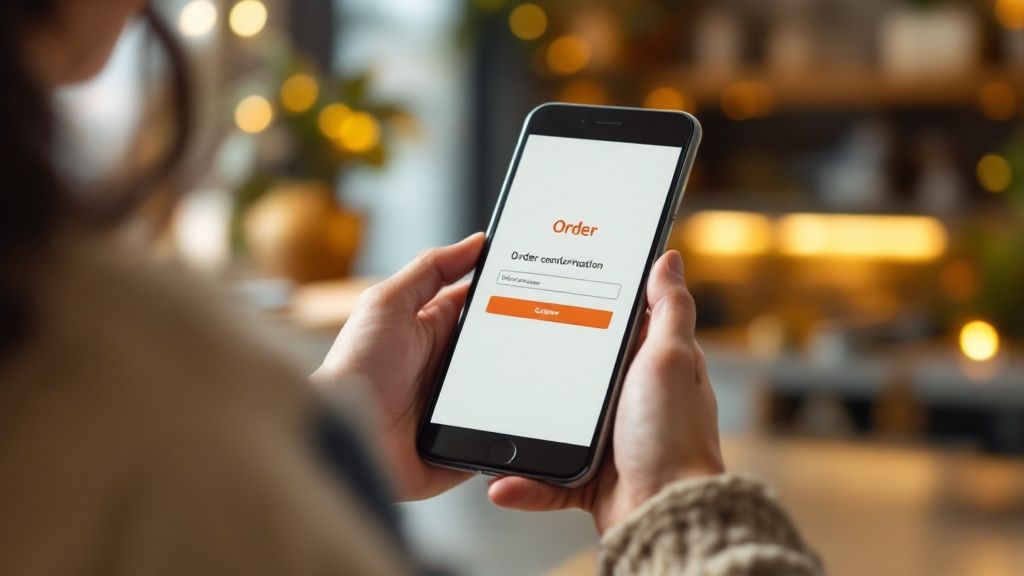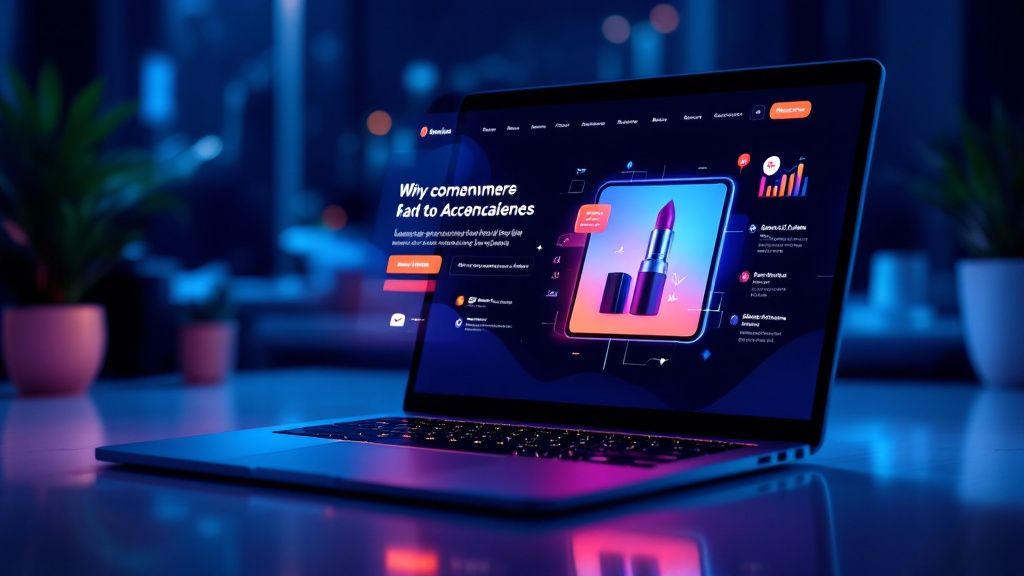Best Practices for Ecommerce Checkout: A Comprehensive Guide to Maximizing Conversions
January 24, 2025

Understanding the True Cost of Cart Abandonment
When customers add items to their online shopping cart but leave before completing the purchase, it creates a major challenge for ecommerce businesses. Cart abandonment directly impacts revenue and requires a thoughtful approach to understand and address its root causes.
According to extensive research by the Baymard Institute, 70% of online shoppers abandon their carts before completing a purchase. Poor checkout design and user experience play a significant role in this high abandonment rate. Their studies show that improving the checkout experience alone can boost conversions by up to 35%. This highlights how critical it is to optimize the checkout process.
Identifying the Root Causes of Abandonment
Several key factors contribute to shoppers leaving items in their cart. Hidden costs revealed late in checkout, like shipping fees or taxes, often surprise and deter customers. Long, complicated checkout flows also frustrate users and lead them to give up before completing their purchase.
Payment options also significantly impact cart completion rates. When customers can't use their preferred payment method, whether it's PayPal or Apple Pay, they're more likely to abandon the purchase. Even small friction points like mandatory account creation can drive away potential sales.
Calculating the Real Impact on Your Business
The true cost of cart abandonment extends beyond just the lost sale value. You need to factor in your marketing investment – the money spent on ads, SEO, and content that brought that customer to your site. These marketing costs make each abandoned cart even more costly for your business.
To understand the financial impact, multiply your average cart value by your abandonment rate. This calculation reveals the potential revenue you're losing. For more insights, check out these proven strategies to reduce cart abandonment. Once you understand the real costs, you can better justify investing in checkout optimization to capture more of these potential sales.
Mastering the Guest Checkout Experience

A well-designed guest checkout option is essential for any modern ecommerce site. When customers can make purchases without creating an account, they're more likely to complete their order – especially if they're shopping with you for the first time. While offering guest checkout may seem straightforward, it requires careful planning to create an experience that works well for both customers and businesses.
Balancing Convenience with Data Collection
Many store owners worry that guest checkout means missing out on valuable customer data. However, there are smart ways to gather key information without disrupting the buying process. For instance, collecting an email address for order updates gives you a way to stay in touch, while optional post-purchase surveys can provide insights into the shopping experience.
The data shows just how important guest checkout is. According to research by Future Commerce and BigCommerce, 63% of shoppers will abandon their cart if they're forced to create an account. The study also found that 60% of mobile shoppers had trouble finding the guest checkout option. These numbers highlight why a visible, easy-to-use guest checkout is crucial for sales.
Designing an Intuitive Guest Checkout Flow
A good guest checkout process should be obvious and easy to use. Make the option clearly visible with distinct buttons or prominent placement. Keep forms short by only asking for essential details. Where possible, auto-fill fields using browser data to speed up the process. Focus on removing any friction that might cause customers to abandon their purchase.
Optimizing for Mobile Devices
With more people shopping on phones and tablets, your guest checkout needs to work seamlessly on mobile. This means having a responsive design that adapts to different screen sizes, along with large, easy-to-tap buttons and simplified forms. Adding digital payment options like Apple Pay and Google Pay can make mobile checkout even faster. These small optimizations make a big difference in helping mobile shoppers complete their purchases.
Strategic Implementation of Payment Options

The success of your online store depends heavily on making checkout easy and convenient for customers. Selecting and implementing the right mix of payment methods can make the difference between a completed sale and an abandoned cart. By understanding your customers' preferences and strategically presenting payment options, you can create a smooth checkout experience that drives conversions.
Understanding Your Customer's Payment Preferences
Different customer groups have distinct preferences when it comes to paying online. While younger shoppers often gravitate toward Apple Pay and Google Pay, others may feel more comfortable with traditional credit cards or PayPal. The key is looking at your sales data and gathering direct customer feedback to identify which payment methods resonate most with your audience. This helps you focus on offering the options your customers actually want to use.
Displaying Payment Options Effectively
How you present payment choices can significantly impact purchase completion rates. Show available payment methods early in the checkout process to build confidence. Use recognizable logos and badges to establish trust and familiarity. Make the payment section highly visible with clear labels and intuitive navigation that guides customers smoothly through checkout.
Offering multiple payment options is essential for reducing cart abandonment. Research shows that 7% of shoppers leave without buying if their preferred payment method isn't available. By providing a range of choices – from credit cards to digital wallets to buy-now-pay-later services – you make it easy for customers to pay how they want. For example, when Sydney So Sweet added alternative payment options, they saw a 21% increase in average order value and fewer abandoned carts. Learn more about optimizing your checkout process.
Managing Technical Integrations
While integrating multiple payment gateways requires careful planning, the customer experience benefits make it worthwhile. Choose payment providers that work seamlessly with your ecommerce platform and offer solid developer support. Focus on solutions that minimize technical complexity while maintaining reliability. This balanced approach helps your development team implement and maintain payment options efficiently while delivering a smooth checkout experience that converts browsers into buyers.
Designing High-Converting Single-Page Checkouts
Single-page checkouts have become a proven way to boost sales and improve customer satisfaction in online stores. Instead of making customers click through multiple pages, this approach puts all checkout elements on one screen. This makes it easier for shoppers to review their order and complete their purchase quickly.
Benefits of a Single-Page Checkout
- Fewer Abandoned Carts: When customers can complete checkout in one step, they're less likely to get distracted and leave
- Quicker Purchases: All information is visible at once, helping customers check out faster
- Better Mobile Shopping: Single pages work well on phones where multiple pages can be hard to navigate
- Complete Transparency: Showing all costs upfront builds trust and prevents surprise fees at the end
Implementing Effective Progress Indicators
Good visual cues are essential for single-page checkouts. Progress indicators help customers understand where they are in the process and encourage them to finish their purchase. Think of them like signposts guiding shoppers to the finish line.
- Visual Elements: Add progress bars or numbered sections to show checkout steps
- Clear Section Headers: Label each part of the form so customers know what to fill out
- Instant Feedback: Let customers know right away if they make a mistake
Optimizing Form Fields and Validation
The checkout form needs to be simple and easy to use. Too many fields or confusing layouts will frustrate customers and hurt sales.
- Keep It Simple: Only ask for information you truly need
- Enable Autofill: Let browsers automatically fill in common fields
- Show Clear Errors: Point out mistakes with helpful messages
- Check As You Go: Validate fields while typing instead of after submission
Single-page checkouts can dramatically improve sales when done right. For instance, UK retailer White Stuff saw impressive results after switching to a single-page design: mobile checkout became twice as fast, conversions went up 37%, and average orders increased 26%. Get more tips from these ecommerce checkout best practices. By focusing on simplicity and user experience, businesses can create checkouts that convert more browsers into buyers.
Building Customer Trust Through Transparency

The checkout process is a critical moment for online stores. This is when customers need to feel confident enough to share personal information and payment details. A transparent, secure checkout builds the trust needed to turn browsers into buyers.
Displaying Trust Signals Effectively
Visual trust indicators make a big difference in customer confidence. Security badges from well-known companies like Norton and McAfee act as a seal of approval, showing visitors their data is protected. Just like seeing a security system sticker on a physical store window, these badges instantly signal safety and professionalism.
Clear contact information also helps customers feel secure. Having easy access to phone and email support shows you're ready to help if needed. When customers know they can reach you, they feel more comfortable completing their purchase.
Communicating Essential Information Clearly
Being upfront about costs and policies is vital for trust. Customers want to know shipping fees, return options, and security measures before they check out. Hidden fees are one of the top reasons people abandon carts, so display all costs clearly from the start.
A detailed return policy is especially important. Just like reading product details helps customers decide to buy, knowing they can easily return items reduces purchase anxiety. This kind of transparency shows you care about the customer experience beyond just making the sale.
Implementing Security Certificates That Matter
While technical security like SSL certificates is essential, most customers don't understand the jargon. Instead of just showing security symbols, explain what they mean in simple terms. For example, "Your payment details are encrypted and protected" is more meaningful than just displaying a lock icon.
Including logos from trusted payment providers like Visa and Mastercard also builds confidence. These familiar brands reassure customers their transaction is secure. Think of it like choosing a well-known bank over an unfamiliar one – people naturally trust established names. By focusing on clear communication and recognized security measures, you create a checkout process that builds lasting customer confidence.
Optimizing the Mobile Checkout Experience

Mobile shopping has become the primary way people buy online. A smooth, well-designed mobile checkout process is essential for turning browsers into buyers. When customers shop on their phones, they expect a checkout experience built specifically for mobile devices – one that works seamlessly on smaller screens and responds naturally to touch.
Creating a Touch-Friendly Interface
The foundation of good mobile checkout starts with making everything easy to tap and interact with. Large, clear buttons and form fields that are properly sized and spaced make it simple for customers to select options and enter information accurately. This helps prevent frustrating mis-taps that can make people abandon their purchase. For instance, having generously-sized buttons means customers won't struggle to hit small targets with their fingertip.
Optimizing Form Fields for Smaller Screens
Mobile forms need to be short and focused. Ask only for essential information needed to complete the purchase. Make smart use of the phone's capabilities – like autofill for addresses and contact details – to speed up data entry. You might be interested in: How to master mobile checkout best practices. Where possible, use dropdown menus or number selectors instead of text fields since they're easier to use on mobile.
Implementing Mobile-Specific Features
Take advantage of features built into modern phones to make checkout faster. Digital wallets like Apple Pay and Google Pay let customers pay with a single tap. Adding biometric authentication through fingerprint or face scanning adds security while keeping the process quick and simple. These mobile-first features align perfectly with what phone shoppers want – speed and ease of use.
Testing and Refining the Mobile Experience
Regular testing across different devices is crucial for catching issues. Use both simulated testing and real device checks to find and fix any problems. Track key metrics like mobile conversion rate and cart abandonment to measure success and identify areas for improvement. Make updates based on both data and customer feedback to keep your mobile checkout working smoothly. When done right, an optimized mobile checkout leads directly to more completed purchases and satisfied customers.
Ready to optimize your Shopify store's checkout process? Checkout Links provides the tools you need to create seamless, personalized shopping experiences that drive sales. Learn more about Checkout Links and start maximizing your conversions today.
 Checkout Links
Checkout Links



